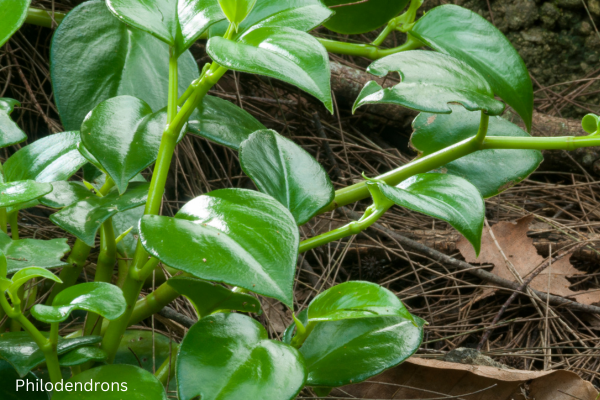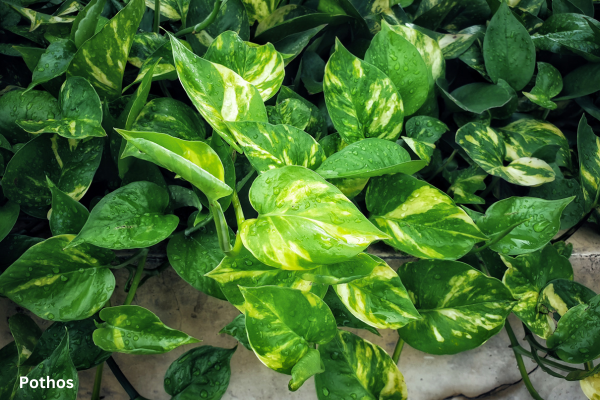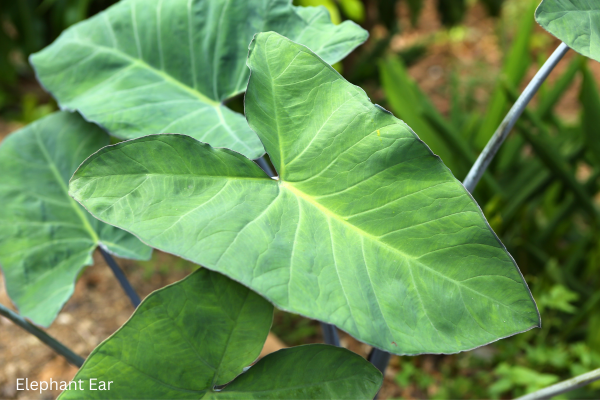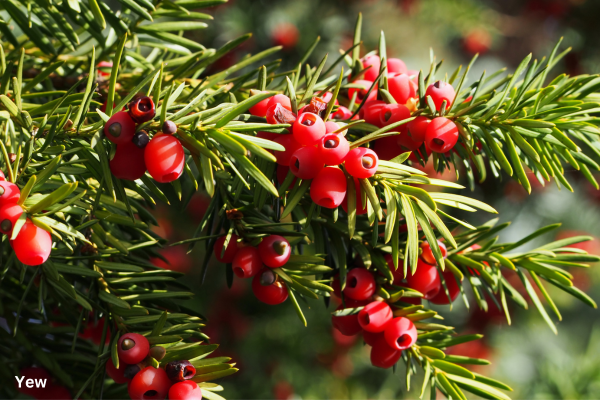Avoiding Toxic Plants For Cats : Safeguarding Your Cat’s Health with Informed Choices
As devoted cat parents, we must ensure the safety and well-being of our feline companions and be aware of the toxic plants for cats. While we strive to create a nurturing, enriching environment for our furry friends, we must also be mindful of the hidden dangers lurking in our homes—toxic houseplants.
Many common indoor plants, cherished for their aesthetic appeal, harbor substances that can pose a severe threat to the health and lives of our beloved cats. From the vibrant blooms of lilies to the lush foliage of Sago’s palms, this seemingly innocuous flora can trigger a range of life-threatening reactions if ingested by our curious kitties.
In this comprehensive guide, we’ll explore the 10 most perilous houseplants that every cat owner must be wary of, their toxic properties, the symptoms of poisoning, and practical steps to safeguard our homes. By arming ourselves with this vital knowledge, we can create a safe haven where our cats can thrive without the looming danger of accidental poisoning.
Lilies: The Feline Nightmare
Revered for their striking beauty, Lilies pose a grave threat to cats. These seemingly innocuous flowers contain toxins that can lead to acute kidney failure, a devastating condition that can prove fatal if left untreated. Even the slightest exposure to any part of the lily plant, including the leaves, petals, stems, or pollen, can trigger a cascade of severe symptoms in our feline friends, such as vomiting, diarrhea, loss of appetite, lethargy, excessive thirst, and urination.
The insidious nature of lily toxicity is that by the time the symptoms become apparent, irreversible damage may have already occurred. Immediate veterinary intervention is crucial, as prompt treatment can significantly improve the chances of a positive outcome for the affected cat. To safeguard our homes, we must eliminate lilies, both indoors and in outdoor gardens, to prevent any accidental ingestion by our curious kitties.

Azaleas and Rhododendrons: Vibrant Killers
Azaleas and rhododendrons, revered for their vibrant blooms and lush foliage, harbor a dark secret – highly toxic to cats. These ornamental plants contain grayanotoxins, potent substances that can wreak havoc on the feline body if ingested. Cats exposed to azaleas or rhododendrons may exhibit a range of severe symptoms, including vomiting, diarrhea, excessive drooling, weakness, and in extreme cases, cardiac abnormalities and coma.
The consequences of azalea and rhododendron toxicity can be life-threatening, underscoring the urgent need for prompt veterinary care if ingestion is suspected. As responsible cat owners, we must take proactive measures to prevent our feline companions from accessing these vibrant yet dangerous plants, both indoors and in outdoor landscaping, to ensure their safety and well-being.

Sago Palm: The Deceptive Killer
With their ornamental appeal and resilience, Sago palms conceal a deadly secret for cats. Every part of this plant, from the leaves to the seeds and roots, contains cycasin, a potent toxin that can have devastating consequences if ingested by our feline friends. Symptoms of Sago palm toxicity in cats may include vomiting, diarrhea, lethargy, loss of appetite, jaundice, seizures, and, ultimately, liver failure.
The seriousness of Sago palm toxicity cannot be overstated, as even a small nibble can have dire consequences for our cats. As responsible pet owners, we must immediately prevent our curious cats from accessing these plants, whether they are kept as indoor houseplants or incorporated into outdoor landscaping. Prompt veterinary intervention is crucial if ingestion is suspected, as timely treatment can significantly improve the chances of a positive outcome for the affected cat.

Dieffenbachia: The Dumb Cane Dilemma
Dieffenbachia, commonly known as Dumb Cane, poses a significant threat to our feline companions due to calcium oxalate crystals within its leaves. If a cat ingests any part of the Dieffenbachia plant, particularly the leaves or stems, it can lead to severe oral irritation and swelling. Symptoms may include drooling, difficulty swallowing, vomiting, and mouth and throat inflammation.
The consequences of Dieffenbachia ingestion can be particularly distressing for cats, as the swelling can even result in respiratory distress if the airway becomes obstructed. Immediate veterinary attention is crucial to alleviate the symptoms and prevent further complications. As a precautionary measure, cat owners must keep Dieffenbachia plants out of reach of their furry friends, ensuring their safety and well-being.

Philodendrons: The Deceptive Danger
Philodendrons, beloved for their attractive foliage, can pose a significant danger to cats if ingested. The leaves of these plants contain insoluble calcium oxalate crystals, which are toxic to our feline companions. When a cat chews or bites into a Philodendron leaf, these crystals are released, causing irritation and swelling of the mouth, tongue, and throat.
Symptoms of Philodendron toxicity in cats may include drooling, excessive salivation, vomiting, and difficulty swallowing. While Philodendron toxicity is rarely fatal, it can cause significant discomfort and distress for our beloved pets. As responsible cat owners, we must keep Philodendron plants out of reach of our furry friends or opt for safer, pet-friendly alternatives to ensure their well-being.

Pothos: The Devil’s Ivy Deception
Pothos, also known as Devil’s Ivy, is a popular and easy-to-care-for houseplant that adds a touch of greenery to our indoor spaces but are toxic plants for cats. However, despite its aesthetic appeal, Pothos poses a potential hazard to our cats if ingested. Like many other plants in the Araceae family, Pothos contains insoluble calcium oxalate crystals, which can be toxic to our feline companions.
When a cat chews or bites into a Pothos plant, releasing these crystals can cause irritation and swelling of the mouth, tongue, and throat, leading to symptoms such as drooling, excessive salivation, vomiting, and difficulty swallowing. While Pothos toxicity in cats is typically not life-threatening, it can cause discomfort and distress. To prevent accidental ingestion and ensure the safety of our feline friends, cat owners need to keep Pothos plants out of reach or consider choosing pet-safe alternatives for indoor greenery.

Elephant Ear: The Towering Threat
Elephant Ear plants, belonging to the genera Colocasia and Alocasia, are known for their striking large, arrow-shaped leaves and are often cultivated as ornamental houseplants. However, these plants can pose a significant threat to our cats if ingested. Elephant Ear plants contain calcium oxalate crystals, which are toxic to our feline friends. When a cat chews or bites into the leaves or stems of an Elephant Ear plant, these crystals are released, causing irritation and swelling of the mouth, tongue, and throat.
Symptoms of Elephant Ear toxicity may include drooling, excessive salivation, vomiting, and difficulty swallowing. While ingestion of these plants is rarely fatal, it can lead to significant discomfort and distress for our affected cats. To prevent accidental ingestion and ensure the well-being of our furry companions, cat owners should keep Elephant Ear plants out of reach or opt for safer, pet-friendly alternatives for indoor greenery.

Yew: The Evergreen Killer
Yew plants, including the Japanese Yew and English Yew, are widely cultivated for their ornamental value in gardens and landscaping. However, these evergreen shrubs contain a potent toxin known as taxine, which poses a severe threat to our cats if ingested. Even the smallest amount of any part of the yew plant, including the leaves, berries, or bark, can lead to a range of life-threatening symptoms in our feline friends, such as vomiting, diarrhea, difficulty breathing, seizures, and sudden death.
The rapid onset and severity of yew toxicity make it imperative for cat owners to take immediate action if a cat is suspected of ingesting any part of a yew plant. Prompt veterinary attention is crucial, as it can mean the difference between life and death for our beloved pets. To safeguard the well-being of our feline companions, it’s essential to refrain from planting yew shrubs in areas accessible to cats and take proactive measures to prevent accidental ingestion.

Castor Bean: The Deceptive Seed of Danger
Castor Bean plants, scientifically known as Ricinus communis, contain a highly toxic substance called ricin in their seeds. This potent toxin seriously threatens our cats if ingested, even in small amounts. Symptoms of ricin poisoning in cats can include severe abdominal pain, vomiting, diarrhea, dehydration, tremors, seizures, and potentially fatal complications.
Due to the potency of ricin, immediate veterinary attention is essential if a cat is suspected of ingesting any part of a Castor Bean plant. As responsible cat owners, we must exercise caution when planting Castor Bean in outdoor spaces accessible to our feline companions and take measures to prevent accidental ingestion. Additionally, keeping cats indoors or supervising them closely outdoors can help minimize the risk of exposure to this deadly plant.

Oleander: The Deceptive Floral Killer
Oleander (Nerium oleander) is a highly toxic plant to cats, containing cardiac glycosides that can have severe consequences if ingested. Every part of the oleander plant, including the leaves, flowers, stems, and even the water in which it’s been standing, harbors toxins that can affect our feline friends’ hearts and gastrointestinal systems. Symptoms of oleander poisoning in cats include drooling, vomiting, diarrhea, abdominal pain, tremors, seizures, abnormal heart rhythm, and even death.
Given its toxicity, oleander should be kept completely out of reach of our cats, indoors and outdoors. Cat owners must also be cautious when pruning or disposing of oleander plants, as even the smoke from burning oleander can be harmful. If ingestion is suspected, immediate veterinary attention is crucial to provide supportive care and increase the chances of a positive outcome for the affected cat.

A Safe Haven for Our Feline Companions
As devoted cat owners, our primary responsibility is to create a safe and nurturing environment for our beloved feline companions by avoiding plants that are toxic for cats. By familiarizing ourselves with the ten most toxic houseplants for cats and taking proactive measures to eliminate them from our homes, we can significantly reduce the risk of accidental poisoning and ensure the well-being of our furry friends.
Remember, even the most seemingly innocuous plants can harbor dangerous toxins that devastate our cats. Vigilance, education, and a commitment to pet-safe landscaping are the keys to safeguarding our homes and providing a secure haven for our cherished companions to thrive.
Embark on this journey of plant safety with us, and together, we can cultivate a feline-friendly oasis where our cats can explore, play, and live their best lives, free from the looming threat of toxic flora. Let’s prioritize the health and happiness of our cats and create a harmonious coexistence where our homes are a true sanctuary for our beloved feline friends.
Source:
Cody Medina (July 1, 2024) 10 Plants That Are Toxic To Cats Pet Owners Should Avoid. https://thegardenmagazine.com/10-plants-that-are-toxic-to-cats-pet-owners-should-avoid/. Accessed July 13, 2024
Other posts you might like:
The Captivating Charm of the British Shorthair
Aromatic indoor plants: 8 Plants for Natural Fragrance Bliss
